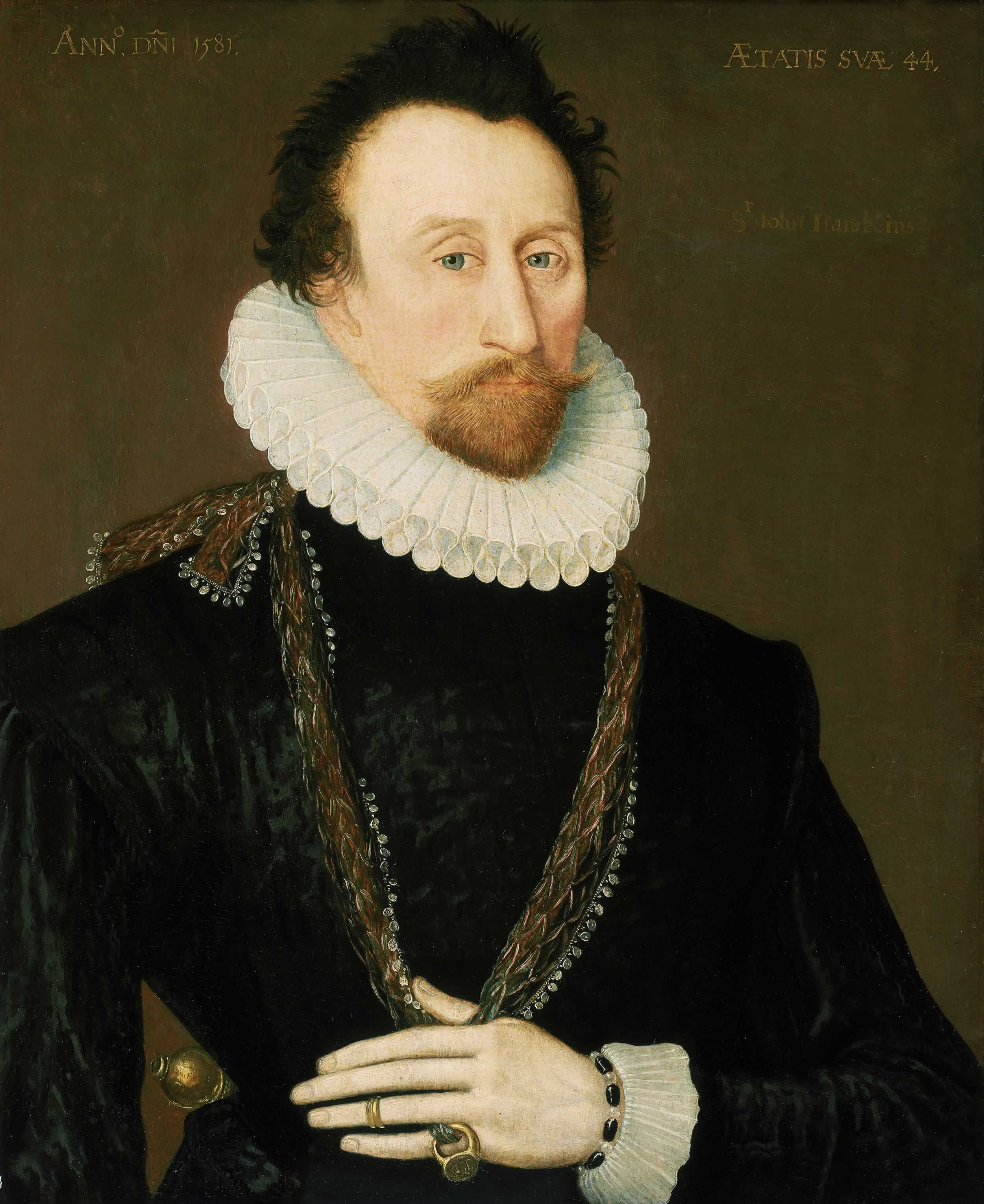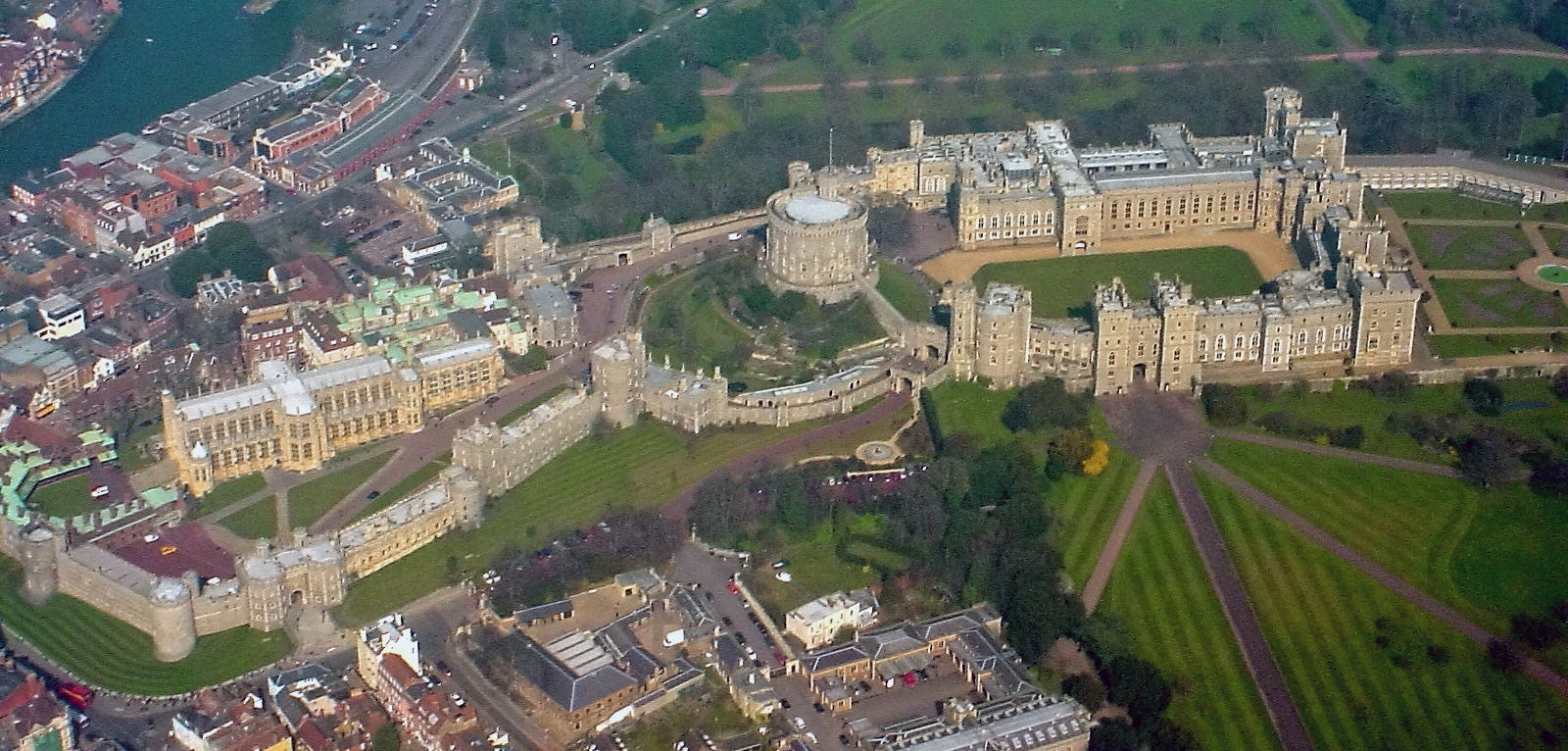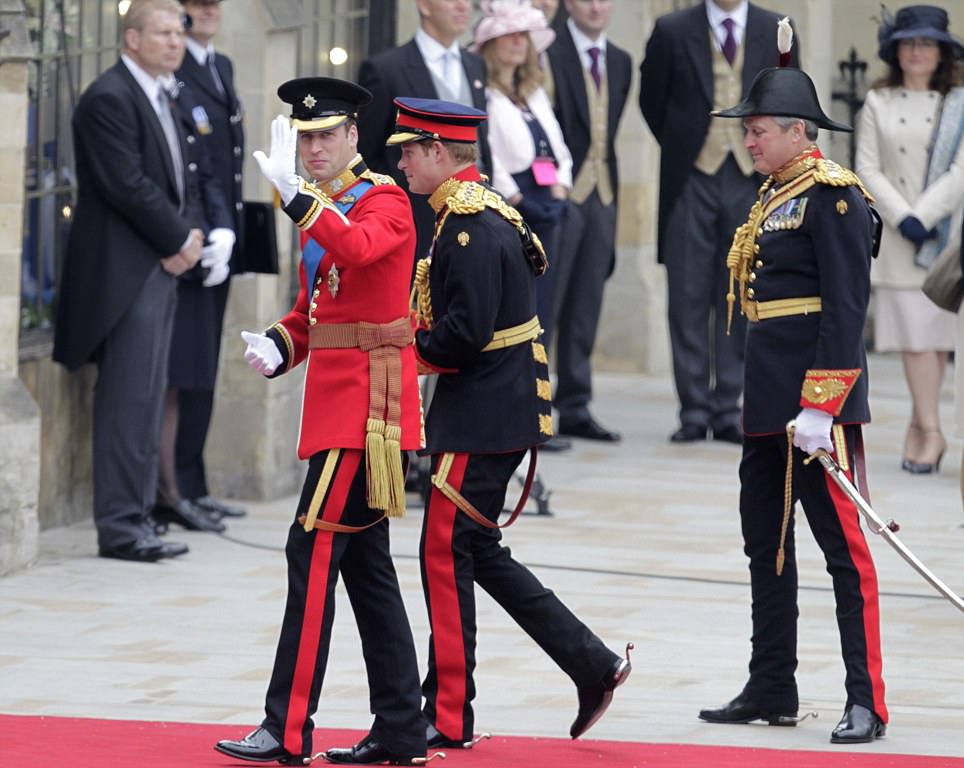David Owen
June 18, 2016
Reparations: Following the money of 400 years of slavery profits. Where did the money go?
THE REPARATIONS DEBATE has had a resurgence this year. I’ll link those articles but I also looked into following the money of 400 years of slavery profits. Where did the money go? It turns out it’s everywhere but in the working man’s pockets by the way. I also looked at my direct ancestor, a slave trader John Hawkins, and thought to myself, “Where did that money go?”. None of it made it down to me as far as I know but it’s plain to see that a lot of the profits ended up in brick and mortar institutions at the highest levels in Britain and the United States. (Although in many cases, for other people, it did result in private family estates that were quietly built up on the backs of historic slavery.)
*****

Bob Marley, being interviewed after the show at the Fox Theater (Photo by Tom Hill/WireImage)
Bob Marley in Concert at the Fox Theater in Atlanta – November 12, 1979
What Could Have Been Done “Here and Now”
AN OPPORTUNITY WAS LOST during the bailout of the Great Recession for the government to just say, “To hell with it. We don’t know for sure who the descendants of the slaves were. Let’s just give 50 grand to each U.S. household and call it the Reparations Benefits Act of 2009“. These high dollar figures should have gone directly to the citizens instead of directly to the banks. The result would have ended up being exactly the same (an enlargement of the National Debt and an increase in inflation). This happened anyway. The only difference is that the banks got the stacks of cash instead of the citizens.
You remember day after day, night after night on TV seeing the pathetic Secretary of the Treasury Hank Paulson begging the government to print warehouse loads of (digital) cash and give it to the banks. He got the job done.
The figures for the cost of the bailouts vary wildly. The figure of 700 billion is seen a lot. But Forbes is talking about 7 trillion. If that’s the case then the cost to each household is about $60,000.
citation for the Forbes figures: http://www.forbes.com/sites/mikecollins/2015/07/14/the-big-bank-bailout/#3f8632ec3723
Some money did go directly to the citizens. It certainly helped. I noticed it (especially when it lapsed).
People who filed tax returns for either 2007 or 2008 could qualify for “recovery rebates.” In total, the rebates lowered federal taxes by about 5 percent in 2008, reducing the estimated average effective federal tax rate from 19.6 percent to 18.6 percent.
Most tax filers received a basic credit of $600—or $1,200 for joint filers—up to their income tax liability before subtraction of child and earned income credits.
Those thresholds equaled the sum of the applicable basic standard deduction plus one personal exemption (two personal exemptions for a joint return). That value was $8,750 in 2007 ($17,500 for joint filers and $11,250 for heads of household) and $8,950 in 2008 ($17,900 for joint filers and $11,500 for heads of household).
People who qualified for a basic credit could also receive an extra $300 credit for each child eligible for the regular child credit. The sum of the basic and child credits was reduced by 5 percent of the tax filer’s adjusted gross income over $75,000 ($150,000 for joint filers).
tax article: http://www.taxpolicycenter.org/briefing-book/what-did-2008-10-tax-stimulus-acts-do
Articles in 2016 Supporting Reparations
UN committee urges US government to pay reparations for slavery
*****
Now back to following the money of 400 years of slavery profits. By reports, all the major European powers were involved in this enterprise, but by the early 18th century, Britain became the world’s leading slave trading power. It’s estimated that British ships were responsible for the forced transportation of at least 2-3 million Africans in that century. So dominant were British ships and merchants that they carried away African captives not only to British colonies in North America and the Caribbean but even to the colonies of their main economic rivals, the French and Spanish, as well as to others’.
citation: http://www.understandingslavery.com/index.php?option=com_content&view=article&id=369&Itemid=145
The answer to where the profits ended up in all of the counties involved in the slave trade is everywhere but in the working man’s pockets. By reports for the New World …
Boston and Newport were the chief slave ports, but nearly all the New England towns — Salem, Providence, Middletown, New London had a hand in it. In 1740, slaving interests in Newport owned or managed 150 vessels engaged in all manner of trading. In Rhode Island colony, as much as two-thirds of the merchant fleet and a similar fraction of sailors were engaged in slave traffic. The colonial governments of Massachusetts, Rhode Island, New York, New Jersey, and Pennsylvania all, at various times, derived money from the slave trade by levying duties on black imports. Tariffs on slave import in Rhode Island in 1717 and 1729 were used to repair roads and bridges.
The 1750 revocation of the Assiento dramatically changed the slave trade yet again. The system that had been set up to stock Spanish America with thousands of Africans now needed another market. Slave ships began to steer northward. From 1750 to 1770, African slaves flooded the Northern docks. Merchants from Philadelphia, New York, and Perth Amboy began to ship large lots (100 or more) in a single trip. As a result, wholesale prices of slaves in New York fell 50% in six years.
On the eve of the Revolution, the slave trade formed the very basis of the economic life of New England. It wove itself into the entire regional economy of New England. The Massachusetts slave trade gave work to coopers, tanners, sailmakers, and ropemakers. Countless agents, insurers, lawyers, clerks, and scriveners handled the paperwork for slave merchants. Upper New England loggers, Grand Banks fishermen, and livestock farmers provided the raw materials shipped to the West Indies on that leg of the slave trade. Colonial newspapers drew much of their income from advertisements of slaves for sale or hire. New England-made rum, trinkets, and bar iron were exchanged for slaves.
When the British in 1763 proposed a tax on sugar and molasses, Massachusetts merchants pointed out that these were staples of the slave trade, and the loss of that would throw 5,000 seamen out of work in the colony and idle almost 700 ships. The connection between molasses and the slave trade was rum. Millions of gallons of cheap rum, manufactured in New England, went to Africa and bought black people. Tiny Rhode Island had more than 30 distilleries, 22 of them in Newport. In Massachusetts, 63 distilleries produced 2.7 million gallons of rum in 1774. Some was for local use: rum was ubiquitous in lumber camps and on fishing ships. But primarily rum was linked with the Negro trade, and immense quantities of the raw liquor were sent to Africa and exchanged for slaves. So important was rum on the Guinea Coast that by 1723 it had surpassed French and Holland brandy, English gin, trinkets and dry goods as a medium of barter. Slaves costing the equivalent of 4 or 5 in rum or bar iron in West Africa were sold in the West Indies in 1746 for 30 to 80. New England thrift made the rum cheaply — production cost was as low as 5 pence a gallon — and the same spirit of Yankee thrift discovered that the slave ships were most economical with only 3 feet 3 inches of vertical space to a deck and 13 inches of surface area per slave, the human cargo laid in carefully like spoons in a silverware case.
A list of the leading slave merchants is almost identical with a list of the region’s prominent families: the Fanueils, Royalls, and Cabots of Massachusetts; the Wantons, Browns, and Champlins of Rhode Island; the Whipples of New Hampshire; the Eastons of Connecticut; Willing & Morris of Philadelphia. To this day, it’s difficult to find an old North institution of any antiquity that isn’t tainted by slavery. Ezra Stiles imported slaves while president of Yale. Six slave merchants served as mayor of Philadelphia. Even a liberal bastion like Brown University has the shameful blot on its escutcheon. It is named for the Brown brothers, Nicholas, John, Joseph, and Moses, manufacturers and traders who shipped salt, lumber, meat — and slaves. And like many business families of the time, the Browns had indirect connections to slavery via rum distilling. John Brown, who paid half the cost of the college’s first library, became the first Rhode Islander prosecuted under the federal Slave Trade Act of 1794 and had to forfeit his slave ship. Historical evidence also indicates that slaves were used at the family’s candle factory in Providence, its ironworks in Scituate, and to build Brown’s University Hall.
Even after slavery was outlawed in the North, ships out of New England continued to carry thousands of Africans to the American South. Some 156,000 slaves were brought to the United States in the period 1801-08, almost all of them on ships that sailed from New England ports that had recently outlawed slavery. Rhode Island slavers alone imported an average of 6,400 Africans annually into the U.S. in the years 1805 and 1806. The financial base of New England’s antebellum manufacturing boom was money it had made in shipping. And that shipping money was largely acquired directly or indirectly from slavery, whether by importing Africans to the Americas, transporting slave-grown cotton to England, or hauling Pennsylvania wheat and Rhode Island rum to the slave-labor colonies of the Caribbean.
Northerners profited from slavery in many ways, right up to the eve of the Civil War. The decline of slavery in the upper South is well documented, as is the sale of slaves from Virginia and Maryland to the cotton plantations of the Deep South. But someone had to get them there, and the U.S. coastal trade was firmly in Northern hands. William Lloyd Garrison made his first mark as an anti-slavery man by printing attacks on New England merchants who shipped slaves from Baltimore to New Orleans.
citation: http://slavenorth.com/profits.htm
Now back to my direct ancestor, a slave trader named John Hawkins.
…and thought to myself, “Where did that money go?“. None of it made it down to me as far as I know but it’s plain to see that a lot of the profits ended up in brick and mortar institutions at the highest levels in Britain and the United States. (Although in many cases, for other people, it did result in private family estates that were quietly built up on the backs of historic slavery.)
Sir John Hawkins, or Hawkyns, British admiral, was born at Plymouth in 1532, and belonged to a family of Devonshire shipowners and skippers — occupations then more closely connected than is now usual. His father, William Hawkins, was a prosperous freeman of Plymouth, who thrice represented that town in parliament, and is described by Richard Hakluyt as one of the principal sea-captains in the west parts of England; his elder brother, also called William, was closely associated with him in his Spanish expeditions, and took an active part in fitting out ships to meet the Armada; and his nephew, the eldest son of the last named and of the same name, sailed with Sir Francis Drake to the South Sea in 1577, and served as lieutenant under Edward Fenton in the expedition which started for the East Indies and China in 1582. His son, Sir Richard Hawkins, was also a British admiral and explorer.

Sir John Hawkins was bred to the sea in the ships of his family. When the great epoch of Elizabethan maritime adventure began, he took an active part by sailing to the Guinea coast, where he robbed the Portuguese slavers, and then smuggled the negroes he had captured into the Spanish possessions in the New World. After a first successful voyage in 1562-63, two vessels which he had rashly sent to Seville were confiscated by the Spanish government. With the help of friends, and the open approval of the queen, who hired one of her vessels to him, he sailed again in 1564, and repeated his voyage with success, trading with the Creoles by force when the officials of the king endeavored to prevent him. These two voyages brought him reputation, and he was granted a coat of arms with a demi-Moor, or negro, chained, as his crest. The rivalry with Spain was now becoming very acute, and when Hawkins sailed for the third time in 1567, he went in fact, though not technically, on a national venture. Again he kidnapped negroes, and forced his goods on the Spanish colonies. Encouraged by his discovery that these settlements were small and unfortified, he on this occasion ventured to enter Vera Cruz, the port of Mexico, after capturing some Spaniards at sea to be held as hostages. He alleged that he had been driven in by bad weather. The falsity of the story was glaring, but the Spanish officers on the spot were too weak to offer resistance. Hawkins was allowed to enter the harbor, and to refit at the small rocky island of San Juan de Ulloa by which it is formed. Unfortunately for him, and for a French corsair whom he had in his company, a strong Spanish force arrived, bringing the new viceroy. The Spaniards, who were no more scrupulous of the truth than himself, pretended to accept the arrangement made before their arrival, and then when they thought he was off his guard attacked him on the 24th of September. Only two vessels escaped, his own, the “Minion”, and the “Judith”, a small vessel belonging to his cousin Francis Drake. The voyage home was miserable, and the sufferings of all were great.
For some years Hawkins did not return to the sea, though he continued to be interested in privateering voyages as a capitalist. In the course of 1572 he recovered part of his loss by pretending to betray the queen for a bribe to Spain. He acted with the knowledge of Lord Burleigh. In 1573 he became treasurer of the navy in succession to his father-in-law Benjamin Gonson. The office of comptroller was conferred on him soon after, and for the rest of his life he remained the principal administrative officer of the navy. Burleigh noted that he was suspected of fraud in his office, but the queen’s ships were kept by him in good condition. In 1588 he served as rear-admiral against the Spanish Armada and was knighted. In 1590 he was sent to the coast of Portugal to intercept the Spanish treasure fleet, but did not meet it. In giving an account of his failure to the queen he quoted the text “Paul doth plant, Apollo doth water, but God giveth the increase”, which exhibition of piety is said to have provoked the queen into exclaiming, “God’s death! This fool went out a soldier, and has come home a divine.” In 1595 he accompanied Drake on another treasure hunting voyage to the West Indies, which was even less successful, and he died at sea off Puerto Rico on the 12th of November 1595.
Hawkins was twice married, first to Katharine Gonson and then to Margaret Vaughan. He was counted a puritan when puritanism meant little beyond hatred of Spain and popery, and when these principles were an ever-ready excuse for voyages in search of slaves and plunder. In the course of one of his voyages, when he was becalmed and his negroes were dying, he consoled himself by the reflection that God would not suffer His elect to perish. Contemporary evidence can be produced to show that he was greedy, unscrupulous and rude. But if he had been a more delicate man he would not have risked the gallows by making piratical attacks on the Portuguese and by appearing in the West Indies as an armed smuggler; and in that case he would not have played an important part in history by setting the example of breaking down the pretension of the Spaniards to exclude all corners from the New World. His morality was that of the average stirring man of his time, whether in England or elsewhere.
citation: http://www.nndb.com/people/186/000101880/
Through genealogy, more was learned about Sir John Hawkins. One thing was his collaboration with Queen Elizabeth I on the slave trade. Queen Elizabeth I was part of the House of Tudor. Queen Elizabeth’s great grandfather, a Howard, was my direct ancestor (on my mom’s side) as well as Sir John Hawkins being my direct ancestor (on my dad’s side). The Howard part was a well known fact when I was growing up but nobody knew about the Sir John Hawkins connection until I started an account with Ancestry.com and looked into our family tree.
I can see that having famous (or infamous) ancestors usually doesn’t result in you having “old money” but it might have resulted in you being in existence. The long ago money did result in increased offspring for several generations which, just by simple math, resulted in a large family tree down the line.
Some of the brick and mortar relics of the House of Tudor (and hence helped to be funded by slavery) are:
Windsor Castle

…and the list goes on… Tower of London, Whitehall Palace, Nonsuch Palace, Eltham Palace, Hampton Court Palace, St. Jame’s Palace, Hatfield House, Westminster Abbey
citation: http://onthetudortrail.com/Blog/2010/11/28/king-henry-viiis-palaces-royal-houses/
Westminster Abbey? Aren’t you damn glad, Bro, that you paid for this? (and that’s where the money went. Although in many cases, it did result in private family estates that were quietly built up on the backs of historic slavery.)

Britain’s Prince William, left, and his best man Britain’s Prince Harry arrive at Westminster Abbey at the Royal Wedding in London Friday, April, 29, 2011. (AP Photo/Alastair Grant)
The end